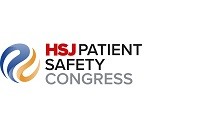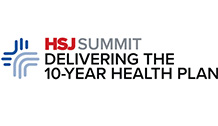HSJ hosts the Patient Safety Watch newsletter, written by Patient Safety Watch chair Jeremy Hunt
Good afternoon and welcome to this fortnight’s edition of the Patient Safety Watch newsletter written by Jeremy. Quite a few wake-up calls in today’s newsletter, many connected to winter pressures…
Nurses share ‘devastating’ impact of corridor care
A Royal College of Nursing report, based on feedback from more than 5,000 nursing staff, revealed accounts of nurses caring for as many as 40 patients at one time in a corridor, medical staff being unable to provide patients having heart attacks with timely care, fire exits being blocked by patient beds, and patients dying on corridors and not being discovered for some time. At the same time, a group of professional bodies, charities and patient groups wrote an open letter to health secretary Wes Streeting to call for the publication of provider-level data on care delivered in temporary environments such as corridors. These two reports should jolt the government’s current thinking that you can prioritise elective care over emergency care: even without considering the human misery of corridor care, the practical consequence of overrun accident and emergencies is that beds fill up with emergency patients rather than the elective patients the government wants to be seen.
Long A&E waits double risk of death
Back to the human misery, though. An Office for National Statistics study shared exclusively with HSJ before its official publication, has found that patients who waited in emergency departments for more than 12 hours were twice as likely to die within 30 days than those seen within two hours. Twelve-hour waits were almost considered a never event when I was health secretary, with the chief executive often called to give personal authorisation. Now, more than one in 10 accident and emergency attendees wait more than 12 hours, with the highest risk of death amongst older patients, those in the North East of England, those who presented with airway and breathing difficulties, and those who went on to be admitted to inpatient care.
BBC News: Dozens of baby deaths at teaching trust could have been avoided
An investigation by BBC News has found that the deaths of at least 56 babies over the last five years at Leeds Teaching Hospitals Trust could potentially have been prevented, while whistleblowers told the broadcaster the quality of care was “appalling”. Heartbroken families are understandably calling for an inquiry, but, as I said on the Today programme on radio 4 last Friday, we should first make sure we are actually implementing the hundreds of recommendations made by previous inquiries. We urgently need a central system that catalogues and prioritises recommendations from not just inquiries, but coroners, HSSIB, the Care Quality Commission, and royal colleges so that trusts know precisely what they are expected to deliver and by when. Nowhere is more urgent than maternity care, as numbers in this report by Patient Safety Watch done in partnership with Imperial College shows. I am very hopeful there will be some sensible recommendations to do this in the review of the patient safety landscape by Penny Dash, which is due to be published shortly.
And the good stuff…
Preventing future deaths
The new all-party parliamentary group on patient safety, which I chair, has got off to a flying start with an inspirational talk from guest speaker Georgia Richards about her brilliant work developing a prevention of future deaths tracker. Georgia explained how the project came about, the current deficiencies in the coronial system in England, and how a widespread failure to act on coroners’ advice was resulting in repeated missed opportunities to improve safety and prevent future harm. This very much feeds into the biggest patient safety issue in the NHS at the moment – hundreds of reports into preventable deaths that gather dust rather than being acted on. Tackling this will be a big priority for the APPG this year.
A life in pictures: Lucy Easthope and disaster recovery – webinar
OK, so you might be wondering why this webinar features in a patient safety newsletter, but bear with me! The webinar is part of a series run by Skybury, a fantastic resource focused on aviation safety, which also provides a wealth of information relevant to other safety-critical industries, including healthcare. This edition features the amazing Lucy Easthope, who reflects on her life and thinks differently about disasters, preparedness, response and aftermath once “the dust settles”. Hosted by Steven Shorrock, the webinar covers many reflections and insights from Lucy that are highly relevant to healthcare, particularly the cultural, organisational and humanistic factors at play when things go wrong. Patient safety buffs will find it a fascinating and worthwhile listen.
Humanising processes
Well worth reading, this excellent new paper on the experiences of individuals involved in patient safety incidents, with a focus on the processes of investigations and litigation. The research found that patients and families often experienced a lack of power, knowledge, and support to navigate the system, and that “…systemic fear of litigation” not only failed to meet the needs of those affected but also inadvertently led to some pursuing litigation. A big call to action.
The National Maternity Safety Conference 2025
The final share for the edition is a plug for this year’s National Maternity Safety Conference, hosted by the brilliant charity Baby Lifeline. This year’s event will take place at the Hilton Metropole in Birmingham on 25 September. The conference will bring together NHS professionals, families, researchers, and stakeholders to discuss this year’s theme: shaping the future of maternity care together. For anyone interested in improving maternity safety, this is the one conference not to miss, as I know from having attended many! You can book your place here.
That’s all for now – James will be back in a fortnight.
Jeremy


























No comments yet